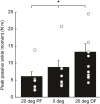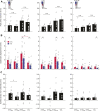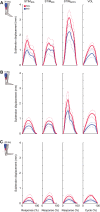The effects of triceps surae muscle stimulation on localized Achilles subtendon tissue displacements
- PMID: 34350951
- PMCID: PMC8353163
- DOI: 10.1242/jeb.242135
The effects of triceps surae muscle stimulation on localized Achilles subtendon tissue displacements
Abstract
The triceps surae muscle-tendon unit is composed of the lateral and medial gastrocnemius (MG) and soleus (SOL) muscles and three in-series elastic 'subtendons' that form the Achilles tendon. Comparative literature and our own in vivo evidence suggest that sliding between adjacent subtendons may facilitate independent muscle actuation. We aim to more clearly define the relationship between individual muscle activation and subtendon tissue displacements. Here, during fixed-end contractions, electrical muscle stimulation controlled the magnitude of force transmitted via individual triceps surae muscles while ultrasound imaging recorded resultant subtendon tissue displacements. We hypothesized that MG and SOL stimulation would elicit larger displacements in their associated subtendon. Ten young adults completed four experimental activations at three ankle angles (-20, 0 and 20 deg) with the knee flexed to approximately 20 deg: MG stimulation (STIMMG), SOL stimulation (STIMSOL), combined stimulation, and volitional contraction. At 20 deg plantarflexion, STIMSOL elicited 49% larger tendon non-uniformity (SOL-MG subtendon tissue displacement) than that of STIMMG (P=0.004). For STIMSOL, a one-way post hoc ANOVA revealed a significant main effect of ankle angle (P=0.009) on Achilles tendon non-uniformity. However, peak tendon non-uniformity decreased by an average of 61% from plantarflexion to dorsiflexion, likely due to an increase in passive tension. Our results suggest that localized tissue displacements within the Achilles tendon respond in anatomically consistent ways to differential patterns of triceps surae muscle activation, but these relations are highly susceptible to ankle angle. This in vivo evidence points to at least some mechanical independence in actuation between the human triceps surae muscle-subtendon units.
Keywords: Ankle; Biomechanics; Neuromuscular control; Plantarflexor; Ultrasound.
© 2021. Published by The Company of Biologists Ltd.
Conflict of interest statement
Competing interests The authors declare no competing or financial interests.
Figures





References
Publication types
MeSH terms
Grants and funding
LinkOut - more resources
Full Text Sources

